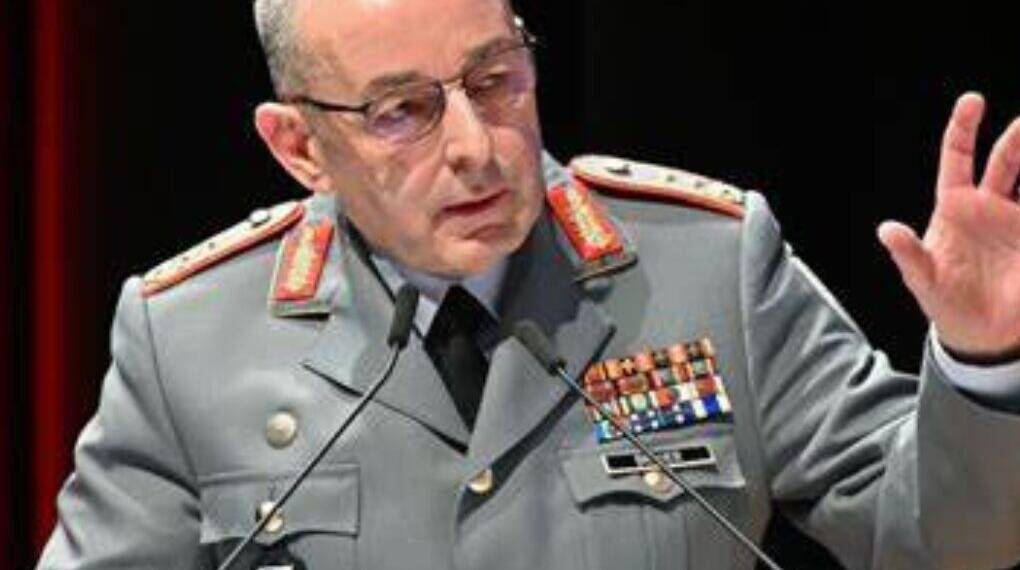As geopolitical tensions persist in Europe, Germany’s top military official, General Carsten Breuer, has urged NATO members to be fully prepared for a potential military threat from Russia within the next four years. Speaking at the Shangri-La Dialogue in Singapore, General Breuer outlined growing concerns about Russia’s rapidly expanding military capacity and the possibility of aggression against NATO’s eastern flank, especially the Baltic states.
General Breuer’s statements arrive amid escalating security concerns, with Russia reportedly increasing its production of military hardware at an alarming rate. According to intelligence shared by German and allied analysts, Russia is manufacturing roughly 1,500 battle tanks annually. While many of these are destined for the war in Ukraine, a significant portion is reportedly being placed in reserves and integrated into new military formations that directly face NATO territory.
These developments, the General warned, point to a calculated buildup of offensive capability. “The evidence indicates a clear intention and effort to stockpile for potential future conflict,” he noted, adding that analysts foresee 2029 as a plausible timeline for a possible assault targeting NATO’s Baltic members. However, he was quick to clarify that this does not mean an earlier confrontation can be ruled out. “We must be ready to respond immediately if needed,” he emphasized.
NATO, the North Atlantic Treaty Organization, could face its most serious challenge in decades if Russia shifts its aggression westward. General Breuer emphasized the strategic vulnerability of the Suwalki Gap—a narrow corridor connecting Poland and Lithuania and flanked by Russian and Belarusian territories. “It’s a highly sensitive region,” he said, explaining that this area remains a prime target due to its geographical significance and exposure.
From the perspective of NATO’s frontline members like Estonia, the perceived threat is not abstract. Breuer recounted discussions with Estonian officials who likened their position to being near a wildfire—they feel the heat, see the flames, and smell the smoke. In contrast, Germany, while concerned, sees only faint signs of that danger on the horizon. This stark difference illustrates the varying levels of urgency across the alliance and highlights the need for unity and swift action.
Beyond traditional warfare, Russia’s tactics now include asymmetric threats such as cyberattacks, sabotage of undersea infrastructure, and drone incursions over critical European sites. These actions, according to General Breuer, are attempts to probe NATO’s defenses and test the alliance’s readiness.
Despite recent signs of political divergence within NATO—especially from Hungary and Slovakia, whose leaders have expressed relatively pro-Russian positions—General Breuer was confident in the alliance’s cohesion. He pointed to the accession of Finland and Sweden as clear evidence of strengthened unity. “I’ve never witnessed this level of solidarity among NATO nations,” he said, referring not only to political alignment but also to consensus among military leaders.
This renewed sense of shared purpose is critical as Europe confronts the challenges of rebuilding its defense capabilities. Like many Western nations, Germany significantly reduced military investment over the past decades. However, attitudes are shifting. Even traditionally pacifist factions, including Germany’s Green Party, have supported lifting fiscal limits on defense spending in recognition of today’s realities.
Yet, questions linger about the alliance’s ability to act on these ambitions. Rebuilding Europe’s defense manufacturing infrastructure and achieving military parity with Russia will require time, funding, and long-term commitment. While Europe focuses on ramping up production, the United States, NATO’s most powerful member, appears increasingly focused on its strategic interests in the Indo-Pacific.
As NATO prepares for its upcoming summit in The Hague, where defense spending and strategic priorities will dominate discussions, General Breuer’s warning serves as a critical reminder. Time may be short, and preparedness is no longer optional. According to him, the task ahead is clear: rebuild, reinforce, and remain vigilant. Only then can NATO uphold its commitment to collective defense in an era of renewed global uncertainty.








